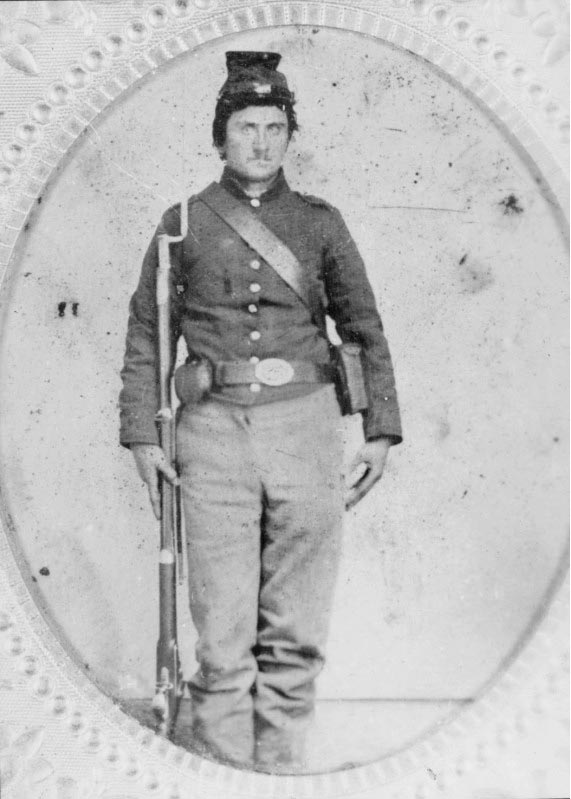The spring of 1898 saw preparations well underway for the opening later that year of the Trans-Mississippi and International Exposition in Omaha. The Omaha Daily Bee reported on May 2 that exhibit installation in the U.S. Government Building was “in active progress and the interior of the great building presents a most animated sight.” Of particular interest was a display of Civil War photographs planned by federal postal authorities.
The Bee said: “There is one feature of this [postal] display which will undoubtedly attract a very great amount of attention in the present excited state of the public mind over anything that pertains to war. [The Spanish American War was then raging.] This is an exhibit of photographs of soldiers taken during the rebellion which miscarried and landed in the dead letter division of the Post Office department. There are about 15,000 of these old pictures and they form a most interesting collection for a variety of reasons.
“During the civil war it was a common thing for soldiers in the northern armies who happened to be near a town to have their pictures taken to send to wives, sweethearts, parents or friends, at home. In thousands of cases the addresses were defective in some particular or became entirely separated from the picture in the course of the rough handling to which some of the mails were necessarily subjected at times and the post office authorities were unable to deliver them. They were preserved, however, and now become a very valuable collection from a historical standpoint. There were many thousands of them originally, but large numbers of them were claimed from time to time and the number has now been reduced to about 15,000. These are contained in frames holding about 100 each and are so hung that they may be examined with great ease by those caring to do so.”
“These pictures are a strange sight in the light of modern photography [in 1898]. They are all of the size known as the ‘card de visite’ and some of them are most fearful and wonderful examples of the horrors of half baked photography. All are faded and yellow with age, or imperfect treatment originally, and some of them are sadly dilapidated, but they tell the story of a generation now almost past and gone. Some of them are pictures of men high in rank in the army, as indicated by their uniformmen in the prime of life, hearty and rugged. Others are pictures of mere boys, some of them wearing their uniforms with a self-conscious pride that tells of the novelty of the experience. Some are taken ‘in camp,’ probably by a traveling photographer, but the majority are ‘interiors,’ and the crude appearance of the ‘property,’ is really painful.”
The Bee noted that the federal government had its own photographer, Charles Richards Dodge, on staff in the Government Building at the exposition “and a ‘darkroom’ with all the accessories has been fitted up for his use in the building. His duties are to take photographs of each of the departmental exhibits and these are preserved in the archives at Washington as records of the occasion.”

The name of this Civil War soldier is unknown. NSHS RG4554.PH0-6



